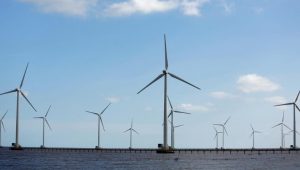Researchers discovered a surprising source of oxygen production 13,000 feet below the Pacific Ocean’s surface. Andrew Sweetman and his colleagues discovered oxygen on the ocean floor, challenging the belief that oxygen is primarily produced by photosynthetic organisms such as plants and algae.
Initially sceptical of their findings, the researchers spent ten years tuning its sensors, expecting a malfunction. However, constant oxygen readings prompted them to examine deeper.
Sweetman’s team, which was doing research in the Clarion-Clipperton Zone between Hawaii and Mexico, utilised optical sensors to test the hypothesis that natural mineral deposits that generate electricity could be responsible for oxygen production. Their findings revealed that polymetallic nodules comprising cobalt, nickel, copper, lithium, and manganese release electrical currents, acting as “geobatteries” that could explain the oxygen presence.
These nodules generate energy, which most likely leads to seawater electrolysis, a process in which an electric current splits water into hydrogen and oxygen. This discovery raises concerns that deep-sea mining may disrupt these natural oxygen sources, reducing ocean biodiversity. The International Seabed Authority has declared portions of the Clarion-Clipperton Zone as mining-free zones. While the researchers are enthusiastic by their discovery, they emphasise the importance of more research and careful consideration of the impact of deep-sea mining.















